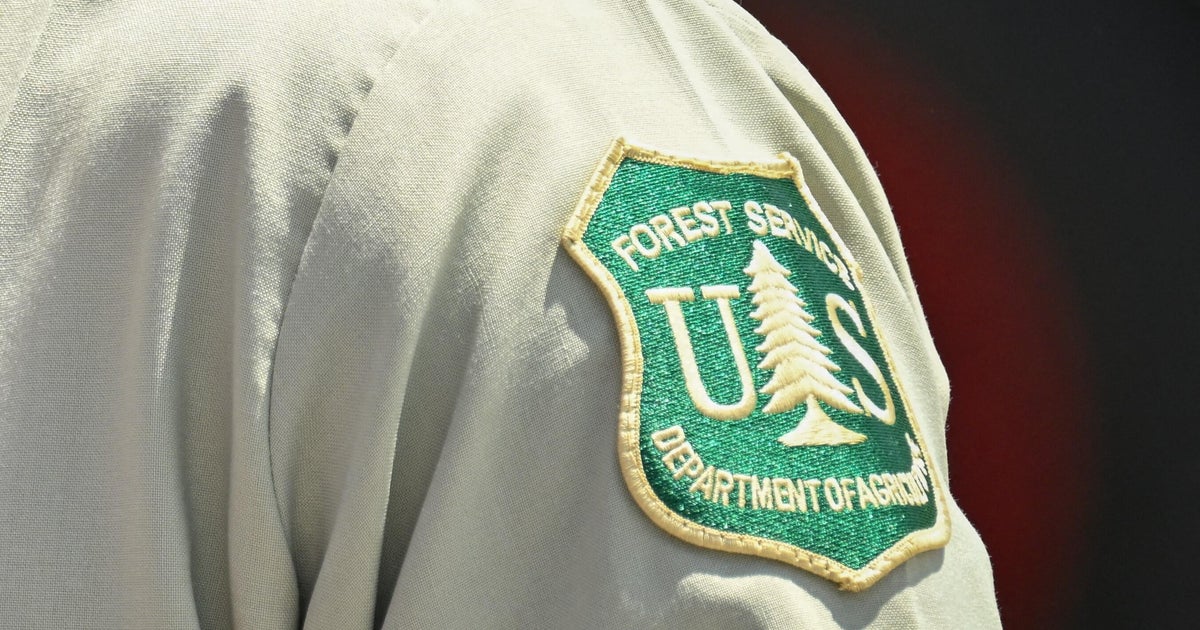US agency ends use of 'cyanide bomb' to kill coyotes and other predators, citing safety concerns
RENO, Nev. — The U.S. Bureau of Land Management has halted the use of spring-loaded traps that disperse cyanide powder to kill coyotes and other livestock predators, a practice wildlife advocates have tried to outlaw for decades due to safety concerns.
The M-44 ejector-devices that critics call "cyanide bombs" have unintentionally killed thousands of pets and non-predator wildlife, including endangered species, according to the U.S. Department of Agriculture's Wildlife Services. The devices, which have a scented bait and emit a poisonous cloud when triggered by a physical disturbance are still allowed in Texas.
The Bureau of Land Management quietly posted a notice on its website last week that it no longer will use the devices across the 390,625 square miles it manages nationally — an area twice the size of California — much of it where ranchers graze cattle and sheep.
Other federal agencies — including the National Park Service, and the Fish and Wildlife Service — already prohibit the devices. But the Forest Service and 10 states still use them in some form.
Eight unsuccessful bills have been introduced in Congress since 2008 to ban the the traps on federal and/or state lands. Sponsors of legislation pending in the U.S. House and Senate that would ban them on both say they're optimistic the bureau's new position will help pave the way for broader support.
Brooks Fahy, executive director of the Oregon-based watchdog group Predator Defense, has been working for 40 years to ban the use of sodium cyanide in the traps. He emphasized that it's registered under the Environmental Protection Agency as a Category 1 toxicant, the highest level of toxicity.
"I can't believe they're still being put on the landscape and they continue to harm people," Fahy said. "I've seen M-44s set right on the edge of a trail."
M-44s consist of a stake driven into the ground with a spring and canister loaded with the chemical. Marked inconsistently and sometimes not at all, humans have mistaken them for sprinkler heads or survey markers.
Federal agencies rely on Wildlife Services to deal with problem animals — whether in remote areas or airports across the country — using lethal and non-lethal forces. The change on Bureau of Land Management land came under a recent revision of a memorandum of understanding with Wildlife Services obtained by The Associated Press on Monday.
It's effective immediately but can be canceled by either side with 60 days' notice.
Wildlife Services has used M-44s to control predators, mostly in the West, since the 1930s. The American Sheep Industry Association and National Cattlemen's Beef Association were among 100 industry groups that wrote to Congress this year, stressing the importance of the program. They said predators cause more than $232 million in livestock losses annually.
About a dozen people have been seriously harmed over the past 25 years by M-44s on federal lands, according to Predator Defense.
Between 2000-2016, Wildlife Services reported 246,985 animals killed by M-44s, including at least 1,182 dogs. From 2014-2022, the agency said M-44s intentionally killed 88,000 animals and unintentionally killed more than 2,000 animals.
Public outcry over the devices grew after a family dog was killed in 2017 in Pocatello, Idaho, and Canyon Mansfield, then 14, was injured after accidentally triggering a device placed on public land about 400 feet (122 meters) from their home. In 2020, the federal government admitted negligence and agreed to pay the family $38,500 to resolve a lawsuit.
"We are so happy to finally see one federal government department banning another's reckless and indiscriminate actions," Canyon Mansfield's father, Mark Mansfield, said last week.
Democratic Rep. Jared Huffman, of California, who is the lead sponsor of the bill that would outlaw use of M-44s on all state and federal lands, has named the current version "Canyon's Law," after Mansfield.
"Cyanide bombs are a cruel and indiscriminate device that have proven to be deadly for pets, humans, and wildlife – and they have no business being on our public lands," Huffman said last week in praising the bureau's move.
Fahy, from Predator Defense, acknowledged efforts in Congress to ban the use of M-44s have gained little traction over the past 15 years.
But he said publicity over the Mansfield case has changed the political landscape more than anything he's seen since 1982 when President Ronald Reagan revoked an executive order issued by President Richard Nixon in 1972 that had banned use of all poisons by federal agents on federal lands.
Several weeks after Canyon Mansfield was poisoned, Fahy said Wildlife Services agreed to stop using M-44s in Idaho. Two years later, Oregon banned them statewide and a partial ban soon followed in New Mexico where some state agencies can still use them.
Colorado, Montana, Nebraska, Nevada, North Dakota, Oklahoma, West Virginia and Wyoming also still allow M-44s.
Animal Wellness Action President Wayne Pacelle helped lead successful ballot initiatives in the first two states that banned M-44s more than two decades ago — California in 1998 and Washington in 2000. He said the bureau's move should prompt a fresh look at other land management agencies' policies.
"There is simply no reason for the federal government to keep spending millions of dollars every year to use poisons to kill wildlife on behalf of a small group of ranchers, Pacelle said Tuesday.
Fahy said the change should help build on the momentum for a nationwide ban.
"This is the most that the needle on the use of federal poisons has moved in over 40 years," he said. "I think M-44s' days are numbered."







